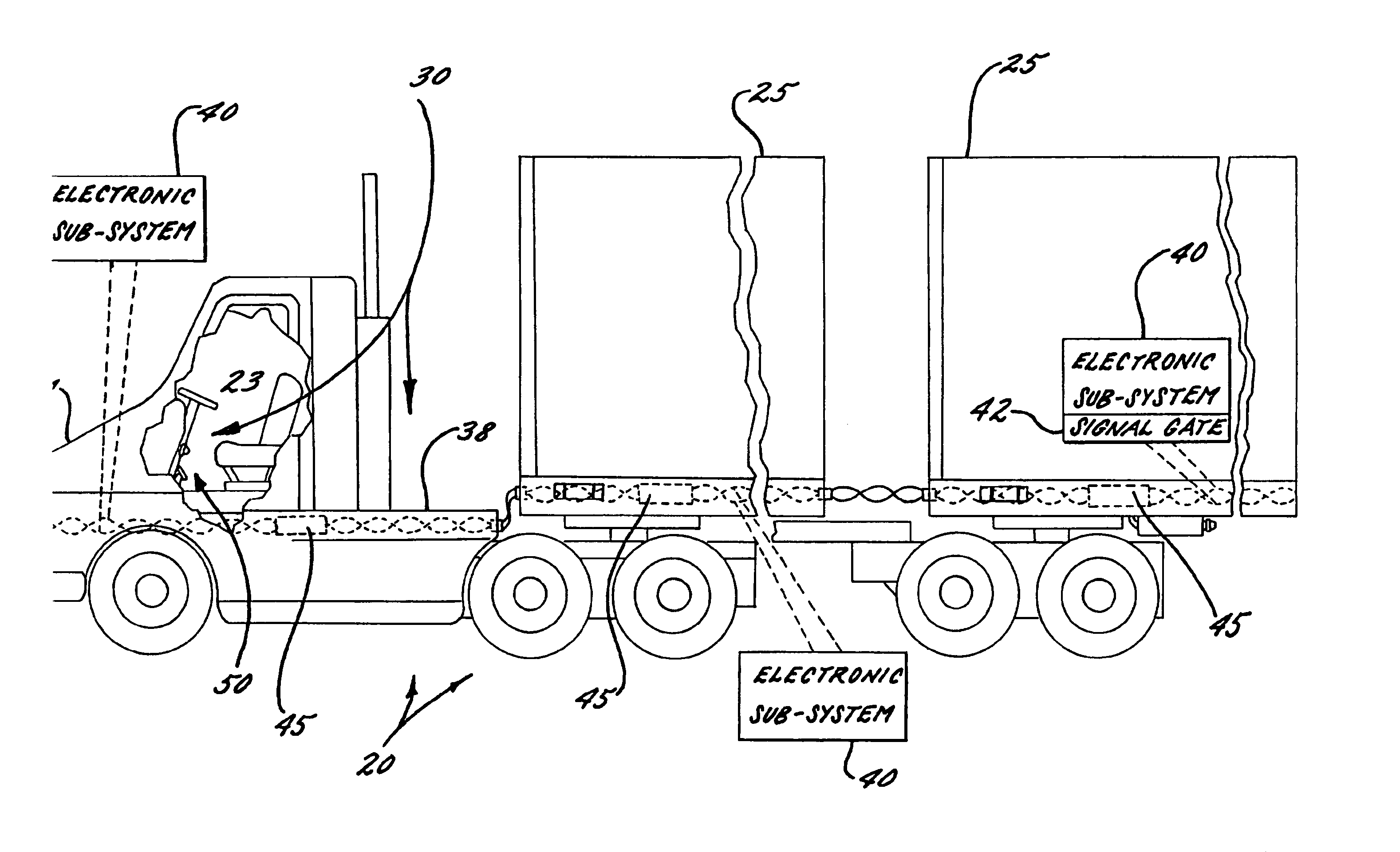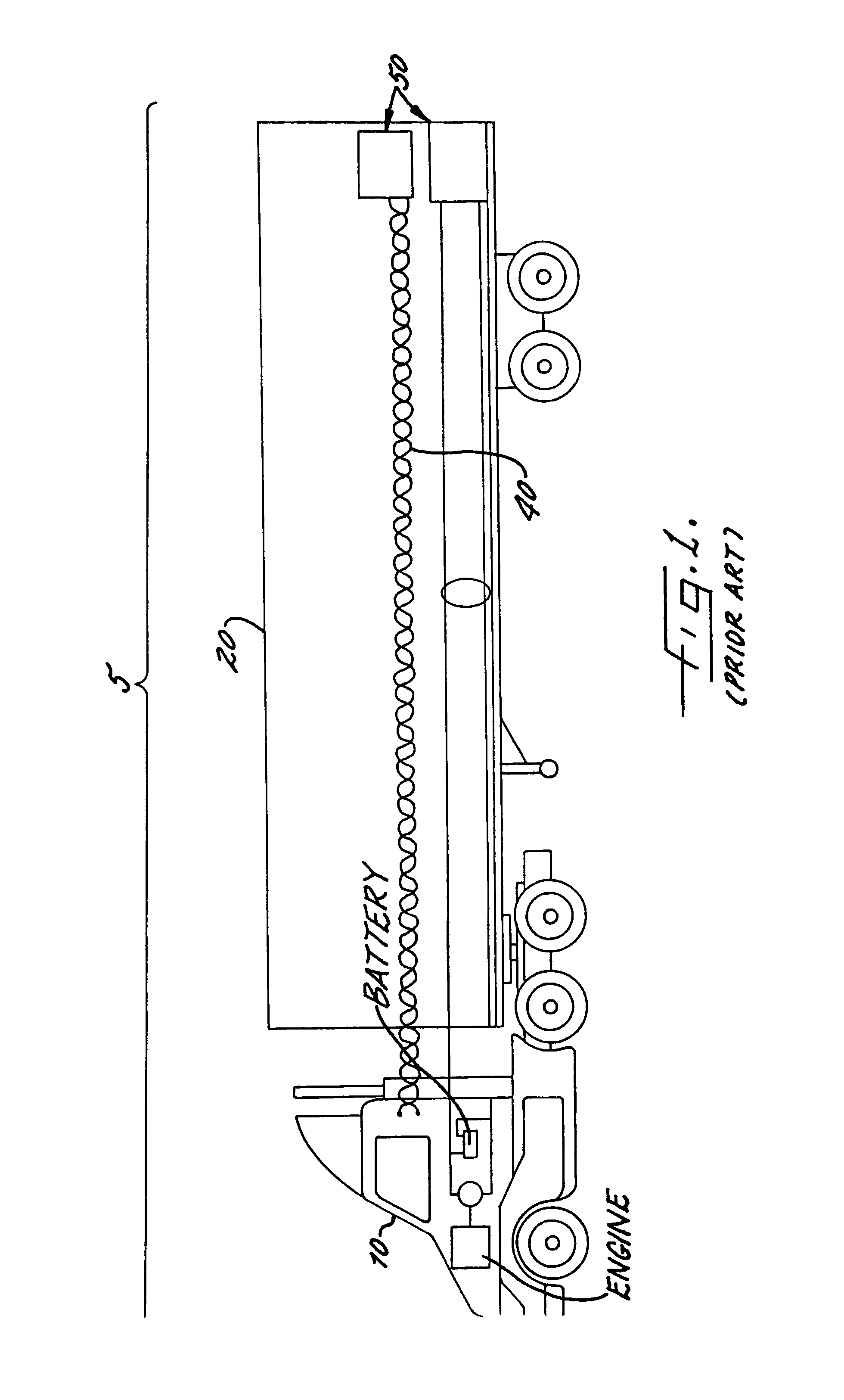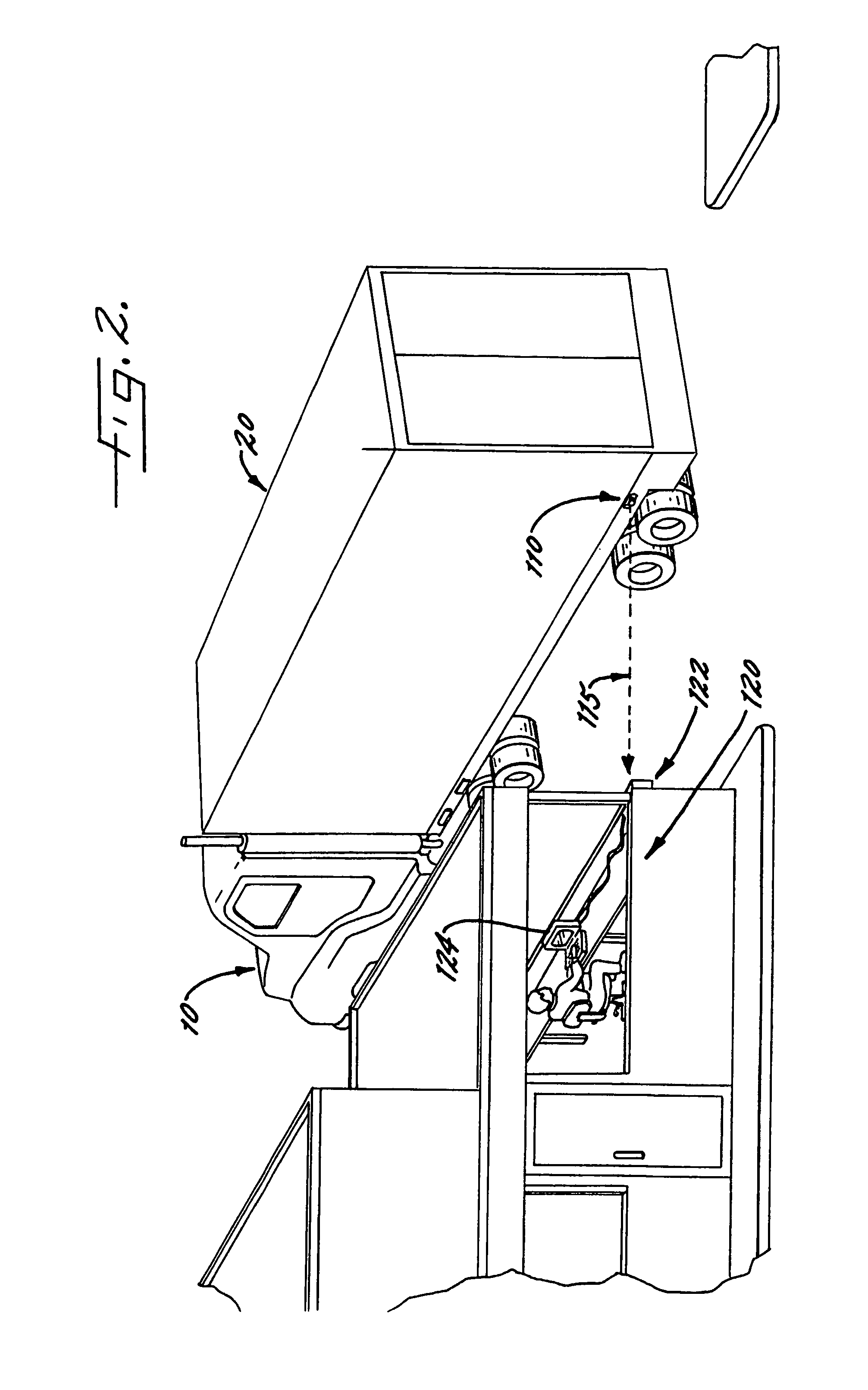Method for data communication between a vehicle and a remote terminal
a technology for remote terminals and vehicles, applied in the field of methods, can solve problems such as undesirable inefficiency, cumbersome techniques, and limited information capacity, and increase the chances of error and omission by human links in the accounting process
- Summary
- Abstract
- Description
- Claims
- Application Information
AI Technical Summary
Benefits of technology
Problems solved by technology
Method used
Image
Examples
first embodiment
[0089]FIGS. 10–12 illustrate an apparatus 30 for data communications associated with a heavy duty vehicle 20, namely a tractor / trailer combination or tractor / trailer truck, according to the present invention. As understood by those skilled in the art, the tractor / trailer combination preferably includes a tractor 21 connected to a trailer 25 for pulling the trailer 25. The tractor 21 and trailer 25 include respective frames and coupling means for coupling the trailer 25 to the tractor 21. In addition, the tractor 21 includes an engine, such as a diesel engine or other motor, for moving the tractor 21 to thereby pull the trailer 25. It will also be understood by those skilled in the art that other types of heavy duty vehicles, such as a recreational vehicle, agricultural tractors or other heavy duty vehicles used in association with agricultural uses, can also be used according to the present invention.
[0090]The data communications apparatus 30 preferably includes at least one electro...
second embodiment
[0104]As perhaps best illustrated in FIGS. 15–16, in the transceiver housing 34′, the transceiver housing 34′ can advantageously be a vehicle light housing mounted to the heavy duty vehicle 20 for housing a vehicle light. The vehicle light housing, for example, can advantageously be a side-marker light housing mounted to the trailer 25 of a truck so that a third party would not readily recognize that the truck is equipped with the data communications apparatus 30.
[0105]A transceiver 35 is preferably positioned within the transceiver housing 34, 34′ and connected to the vehicle data communications protocol converting means 33 for transmitting the second data communications protocol from the heavy duty vehicle 20 and receiving the data communications protocol from a remote data communications terminal 60. For infrared data communications, for example, the transceiver 35 (see also FIG. 13) preferably includes a plurality of infrared light emitter or light emitting diodes, a plurality o...
PUM
 Login to View More
Login to View More Abstract
Description
Claims
Application Information
 Login to View More
Login to View More - R&D
- Intellectual Property
- Life Sciences
- Materials
- Tech Scout
- Unparalleled Data Quality
- Higher Quality Content
- 60% Fewer Hallucinations
Browse by: Latest US Patents, China's latest patents, Technical Efficacy Thesaurus, Application Domain, Technology Topic, Popular Technical Reports.
© 2025 PatSnap. All rights reserved.Legal|Privacy policy|Modern Slavery Act Transparency Statement|Sitemap|About US| Contact US: help@patsnap.com



